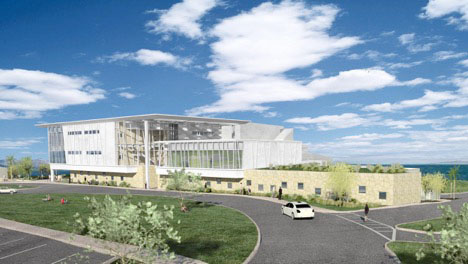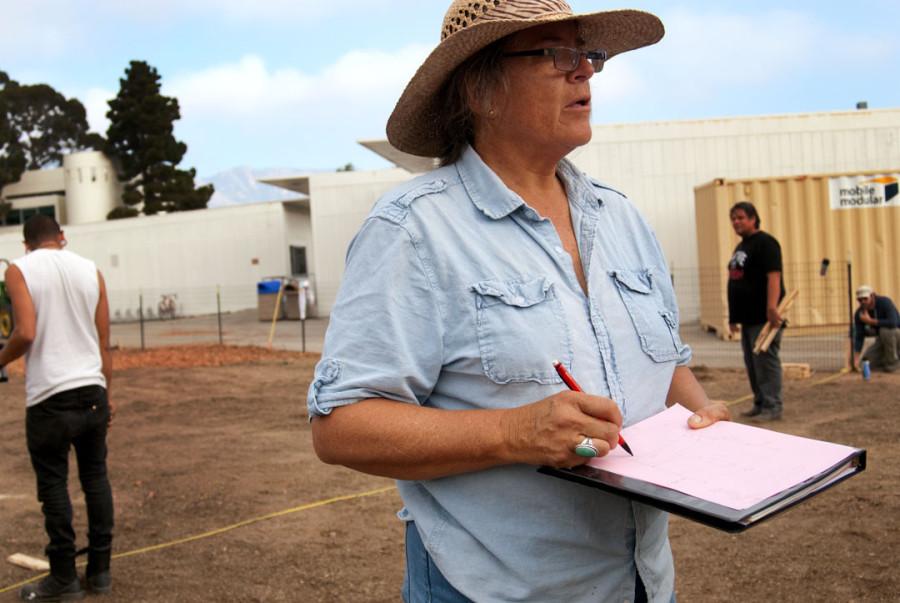The latest craze in the housing industry, tiny homes, are more than just portable, downsized ways to live.
The students in the construction technology department have spent all spring semester converting, what was once a trailer hitch, into the starting foundation for a tiny home. Their version of a tiny home has been both a learning and team building experience.
“I’m excited for my students,” said James “Jim” Cunningham, construction technology instructor. “When they start off the class, they all have different abilities. At the end of the class, you really see them building as a team.”
After the department received a $25,000 Perkins grant, it used the money to purchase the trailer mid-fall, but because the semester’s curriculum had already been set, construction on the tiny house did not begin until Spring.
In the meantime, students worked on the house’s design layout, according to department chair Dr. Patrick Foster.
This semester, Cunningham’s introduction to framing class began the project by building the frame of the house.
“I didn’t really know what carpentry was until I started,” said Jonathan Peña, a first-semester construction student. “I’m proud of everyone because without all of us, we wouldn’t be able to do it.”
By the end of the semester, the project should have the foundation, walls and roof installed.
Nathan McBrayer, a first-year construction student, said students had to repair the structure twice because of wind and rain damage. However, he thought they got pretty far considering they “kind of had to start over.”
“I didn’t think we were going to get this far. It’s awesome,” McBrayer said. “It’s been a good learning experience.”
For some students, this is their first semester with the department, and they will finish the program around the same time the tiny house gets completed.
“They’ll be able to do different phases of it as they grow too,” Cunningham said. “It’s really good for them to be exposed to all the different aspects of construction.”
He said students will work on framing, labor, roofing, electricity, solar and finishing carpentry while working on the project.
Summer 2017 construction classes will begin installing solar panels to the roof, Foster said.
In Fall 2017, construction students will put up the inside walls and design the inside, as well as install plumbing and electricity. Foster said the students working on the interior design must use material that is specific to tiny homes.
He predicts the project to be completed by Summer 2018, and said he plans to apply for another $10,000 grant for the upcoming school year.
The completed home is expected to have a gray water tank and even a composting toilet.
Foster said the house was designed with these features so that residents could go “off the grid” and be “totally independent.”
“They’re very self-sufficient,” McBrayer said. “You can move wherever you want to move. It’s perfect size for one person.”
When the completed project is done, Foster said he doesn’t know yet what the department will do with the tiny house, but that he may sell it in an auction and use the money to purchase another trailer to start a new tiny house.
“Hopefully we get good money for the program,” Peña said. “As a student, I would like to see more progress.”
“At the end of the day, I just feel proud of how much we did this semester. We did a lot in a short amount of time.”














![Ken Watts uses the cable chest press machine on April 9 in Santa Barbara, Calif. "[What] people value the most in personal training is accountability," Watts said.](https://www.thechannels.org/wp-content/uploads/2025/04/MGSWatts-3-1200x800.jpg)




![Malia Hubbard admires the ceramic pieces created by students in Art 150, "Fundamentals of Ceramics" on April 10 in Santa Barbara, Calif. "I think [the gallery] is absolutely fabulous," Hubbard said. "Being able to see students work [is] so amazing."](https://www.thechannels.org/wp-content/uploads/2025/04/MGSStudentShow-1-1200x800.jpg)